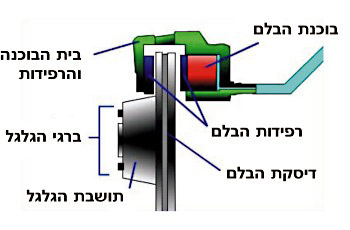Question:1
What would you do to achieve safe driving down a continuous steep slope?
Category : Know Your Vehicle
Question:2
Who is permitted to repair vehicle safety part failures?
Category : Know Your Vehicle
Question:3
What is the function of the vehicle’s starter?
Category : Know Your Vehicle
Question:4
Why is it important for the vehicle to have intact bumpers (fenders)?
Category : Know Your Vehicle
Question:5
What factor might undermine seat belt functioning and efficiency whilst driving?
Category : Know Your Vehicle
Question:6
In order to shift gears from parking (P) to Drive (R or D) in an automatic transmission vehicle, you should:
Category : Know Your Vehicle
Question:7
Where can you find information about the vehicle’s required tyre pressure?
Category : Know Your Vehicle
Question:8
To disconnect the engine from the wheels, you should:
Category : Know Your Vehicle
Question:9
For what reason might the indicator warning light on the dashboard flash too quickly?
Category : Know Your Vehicle
Question:10
The required air pressure in the vehicle’s tires:
Category : Know Your Vehicle
Question:11
What are you required to do if you detect a malfunction in the braking system while driving?
Category : Know Your Vehicle
Question:12
Wheels that are installed on the same axle must be:
Category : Know Your Vehicle
Question:13
Which of the following warning indicators does not require the driver to stop driving when it lights-up?
Category : Know Your Vehicle
Question:14
“Keeping a safe distance from the vehicle in front affects fuel consumption and vehicle wear and tear”. Correct or incorrect?
Category : Know Your Vehicle
Question:15
What should a driver do when he detects a safety failure in the steering wheel or brakes while driving?
Category : Know Your Vehicle
Question:16
What regular vehicle maintenance check-ups should be performed by the driver?
Category : Know Your Vehicle
Question:17
What are you required to do after changing a wheel?
Category : Know Your Vehicle
Question:18
How does the braking system of a vehicle work?

Category : Know Your Vehicle
Question:19
What is the proper way of checking engine oil level?
Category : Know Your Vehicle
Question:20
Where would you place the jack stand while changing a wheel?
Category : Know Your Vehicle
Question:21
When is it recommended to check the tire air pressure?
Category : Know Your Vehicle
Question:22
How does the vehicle’s Electronic Stability Program (ESP) System function during dangerous driving conditions?
Category : Know Your Vehicle
Question:23
What is the correct order of actions while changing a wheel?
Category : Know Your Vehicle
Question:24
What is the required air pressure of the vehicle’s spare tire?
Category : Know Your Vehicle
Question:25
What are the side effects of using malfunctioning windshield wipers?
Category : Know Your Vehicle
Question:26
Why is it prohibited to install stiff and protruding accessories inside the passenger compartment?
Category : Know Your Vehicle
Question:27
What might be causing the steering wheel to be pulled, in a non voluntary manner, to either side whilst driving?
Category : Know Your Vehicle
Question:28
What is considered as a proper vehicle maintenance frequency?
Category : Know Your Vehicle
Question:29
What is the function of the vehicle’s auxiliary (parking/hand) brake?
Category : Know Your Vehicle
Question:30
When the hand (parking) brake light on the dashboard is turned on while driving:
Category : Know Your Vehicle

